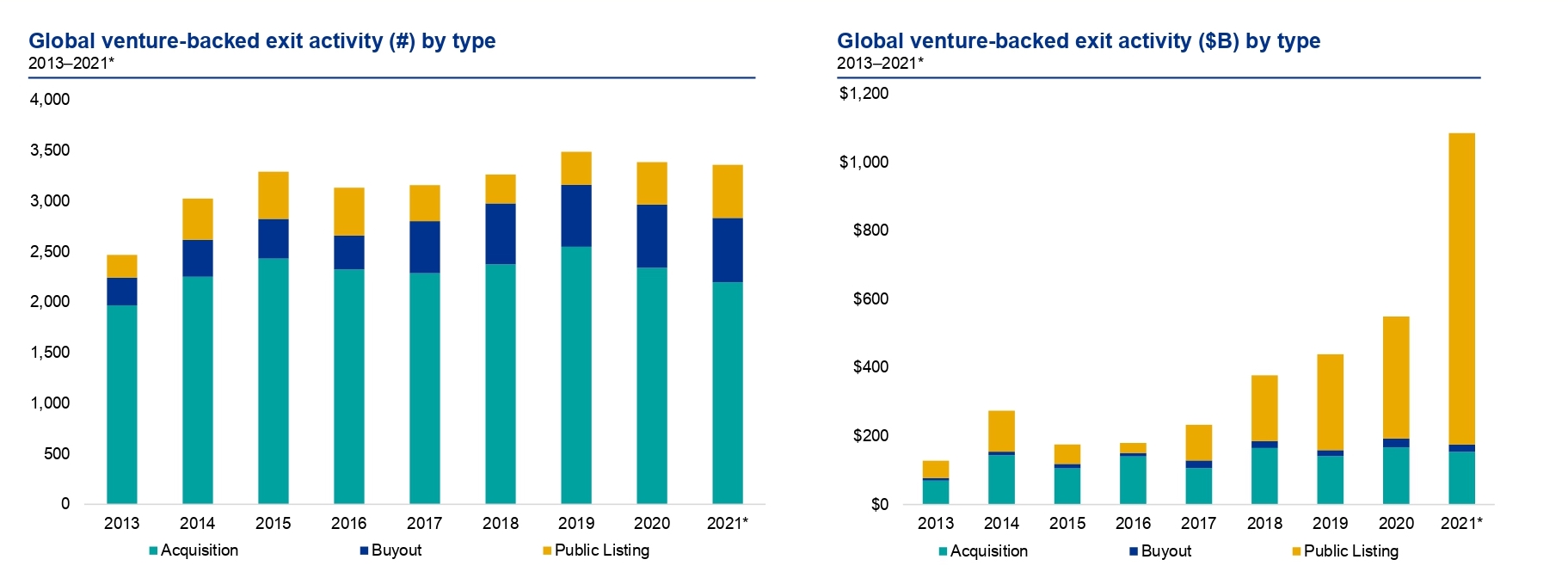HERE'S HOW CORPORATIONS CAN BUILD INNOVATION CLUSTERS IN EMERGING TECH ECOSYSTEMS
In many cases, a strong indicator of the current health and long-term sustainability of a certain region is the total funding directed at early-stage ventures. In Saudi Arabia, early-stage rounds represented 95% of all VC funding in 2021 which reached a total of $548 million in venture activity - a 270% YoY increase from 2020, according to MAGNiTT.
Startups like Tamara ($110 m Series A), Red Sea Farms ($10 m pre-Series A), and Lendo ($7.2 m Series A) raised the three largest rounds announced last year, as early-stage investment in local companies drew interest from both local and international firms as influential as the PIF-backed Sanabil Investment, Softbank, and the China-headquartered MSA Capital.
Innovation Capital
The increase in early-stage VC funding reflects a growing movement towards globalizing "Innovation Capital", the 2021 report by CB Insights suggests. The higher the records are in early-stage financing, the wider the innovation capital can extend, and this direct connection can be seen in entrepreneurially advanced regions such as Silicon Valley, where innovation correlates to a historically steady rise in early-stage funding.
Coined in a 2014 study on organizational knowledge, Innovation Capital has become more commonly known around startup circles as referencing a combination of human capital (who the founder is), social capital (who the founder knows), reputational capital (what the founder is known for), and what Jeff Dyer, Nathan Furr, and Mike Hendron call, "impression amplifiers" - or intentional actions taken by founders to amplify the 'impressions', or impact, of their ideas. What both resources agree on is the non-tangible nature of innovation capital. Being non-tangible, and hence both context-driven and malleable, innovation capital can be practically easy to generate across emerging tech ecosystems. What could spearhead this movement is having pre-existing highly profitable and well-established organizations that can function as centralized innovation clusters.
In Silicon Valley, big tech companies like Apple, Alphabet, and Meta have each built a recognizable flow of technical knowledge and talent mobility over time, creating tech clusters in the physical spaces around them. Characterized as having a frontier edge that extends through multiple tech verticals and industries, tech clusters can only start to appear once enough talent, typically in engineering fields, is there.
While aspiring to duplicate this across the local Saudi ecosystem might still seem futuristic, what is nevertheless critical to reassess today is the role that locally-headquartered corporations can play in spreading technical knowledge and entrepreneurial stamina - building much-needed innovation clusters that can eventually morph into globally-competitive tech clusters.
Innovation Clusters
In a 2015 briefing paper published by The Economist Intelligence Unit, the research points out 6 big success factors that make up an innovation cluster in any region: livability, infrastructure, low cost structure (especially in early stages), accommodating policy framework, a skilled workforce, and good lifestyle offering.
Most importantly, the paper relates the emergence of clusters with the coexistence of a network of high-performing companies who directly, and indirectly, collaborate by virtue of being in the same geographical region. Historical examples included the existence (and eventual fall) of companies like IBM in Colorado and India, BlackBerry in Canada, and Nokia in Finland. As these companies established their market presence, the managerial and tech talent they trained, the solutions they invested in, and the collaborations they led created a strong foundation for local startup scenes that persisted after the eventual death of each of those companies in their area.
Known as the corporate 'whale fall', the fall sequence starts with foreign corporations setting up regional headquarters in emerging markets like India, hiring local talent to satisfy their operations, then as they run into economic or political distress and close out their offices, they end up leaving behind a large educated and well-trained tech population ready to build their own startups. In India's case, what triggered IBM to leave in the late 1970s was the new regulatory law that required all foreign companies to transfer 60% of their private ownership to local shareholders.
The gravitational pull that corporations enjoy by being innovation-generators provides them with the unique advantage of becoming active local players who drive a sustainable and self-reinforcing growth strategy. Corporations who help crystalize future innovation centers in the cities they are headquartered in can drive immediate ecosystem shifts by acting as talent magnets, unlocking local jobs within particularly high-growth tech and business industries. This is a major opportunity for the Saudi market, since research has shown that a key criteria of these entrepreneurship-leading corporations is their local headquarters, which is a characteristic that can, to some extent, minimize the threat of having a regulation-driven corporate whale fall.
Symbiotic Growth
At the heart of any profitable and high growth entrepreneurial ecosystems, then, lies at least one well-established business. Typically, these businesses are not only differentiated by their tech talent, local headquarter, and market profitability alone, but they also tend to undertake R&D and production activities as well as operate in collaboration with each other. In some cases, they invest in solutions that others seek to compete with, and in other cases, they employ the solutions others have helped grow.
For the Saudi landscape, this symbiotic movement can enrich the startup ecosystem with market solutions that are both corporate-backed and easily integrable. New tech innovations that serve the needs of investing corporations and their entrepreneurial talent is almost guaranteed to have strong indications of local marketability whereby the process of testing MVP products can be hugely accelerated.
Innovation clusters can also give rise to startups operating within the 'sharing economy' model, which according to a recent press release published in Bloomberg, is trajected to generate $335 billion worldwide by 2025. In Silicon Valley, examples of such startups include Airbnb, Uber, and Etsy- who, combined, surpassed $125.5 billion in IPO valuation.
While the sharing economy has triggered criticism on different fronts, it remains the business model that is mostly advantageous for emerging markets with highly literate young populations, which parallels the local landscape. In Saudi Arabia, 20% of the total early-stage entrepreneurial activity is represented by adults as young as 18 years of age, a large majority of whom are incredibly tech-savvy and well educated, reflecting the preparedness of the local market to adopt models of shared economy.
With the persistent increase in early-stage VC funding that indirectly formulates innovation capital, a young entrepreneurial talent ready to start ventures, and a national movement towards encouraging the establishment of regional headquarters, Saudi Arabia is on the course to put in place the foundations for one, or multiple, innovation clusters.

